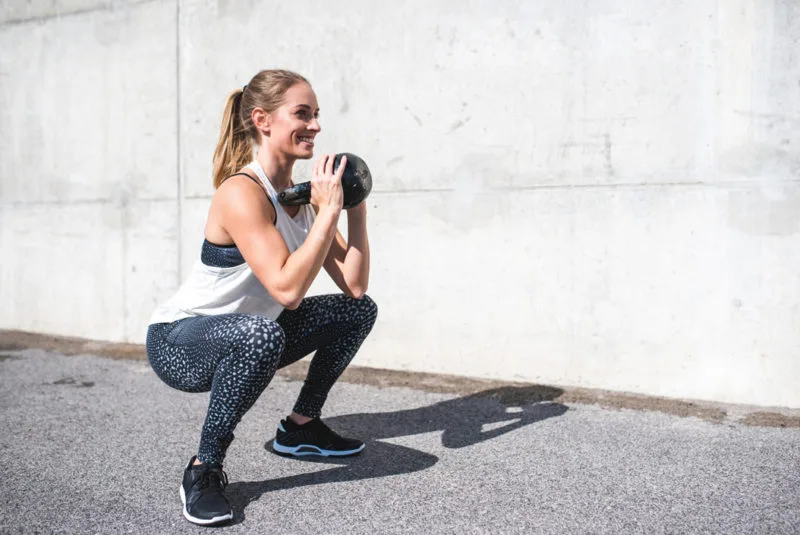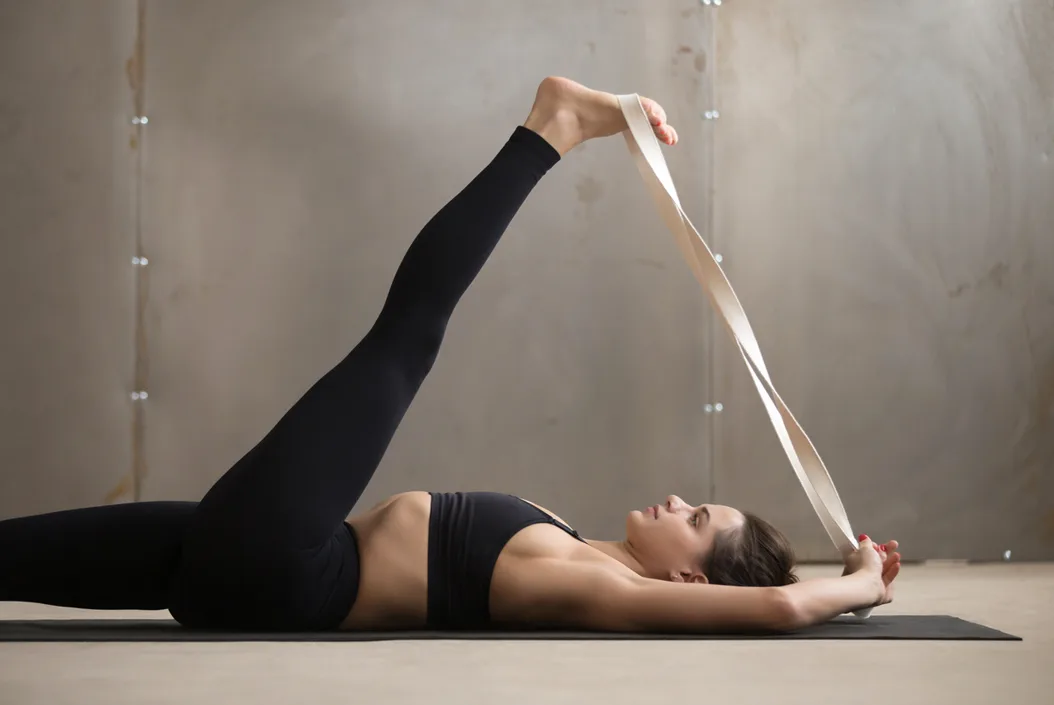If you often find yourself asking: mobility vs flexibility – what is the difference? Then you’re not alone. Mobility and flexibility are two terms that are used interchangeably but mean very different things.
Both play an important part in health and fitness and require certain techniques to develop. This means that understanding how they differ is vital.
So, to help you meet your wellbeing goals, Complete Pilates are here to explain the main differences between flexibility and mobility. Want to find out what they are? Then keep scrolling.
What is flexibility?
Flexibility generally refers to how much passive range of motion you have as well as the ability of your soft tissue (muscles) to stretch.
Wondering if you’re flexible? Lie on your back and loop a resistance band around the sole of one foot. Now, pull your leg close to your trunk. If your muscles allow, you’ll be able to pull your leg close to your body – although other factors, such as nerves, posture and muscle weakness can also have an impact on your ability to stretch your hamstrings.
Now, without any assistance, try and lift the leg overhead towards your body in the same way. If you are only flexible but not strong in those muscles, you may not be able to stretch your leg as far as before. You might also find yourself shaking and getting cramps.
In contrast, if you have strength but little flexibility then you will have limited range when bringing your leg towards you in this position. Unlike the purely flexible person, however, you may find it easier to hold the leg suspended above the ground without the use of a prop.
What is mobility?
Mobility refers to the range of motion around a joint. That’s why flexibility is part of mobility – the muscles around a joint need to be flexible enough for the joint to move through a full range.
But mobility is also about having strength within your flexibility. It refers to your ability to take your body through a full range of movement with control, like executing a full, deep squat (and coming out of it) with good form.
Mobility vs Flexibility – which do I need to work on?
Ultimately, which you need to focus on depends on your goals and your current strengths/weaknesses.
Having said that, working on flexibility alone is rarely beneficial. For example, while doing the splits may look impressive there are few physical benefits to having such an extreme degree of flexibility – that is, unless you’re a gymnast or a dancer
Mobility, on the other hand, is beneficial to most people. That’s because having control over your flexibility means you are less likely to get injured and it can help protect your joints. It’ll also mean you get more from your regular strength-training programme.
To work on your mobility, focus on exercises that build on stability and strength through a full range of movement.

Improving your flexibility
Pilates and Yoga are two forms of exercise that are known to improve flexibility.
However, if you struggle to touch your toes for another reason, say because of nerves, postural problems or muscle weakness, then simply stretching in Yoga or Pilates class won’t be beneficial.
Instead, you need to identify the reason behind your inflexibility and address that – which is something a Physiotherapist or clinical Pilates teacher can help you with. These professionals can also then prescribe safe exercises to improve your flexibility (if that is what you need).
Improving your mobility
If you’re looking to improve your mobility, simply stretching your muscles in a static way isn’t going to help.
Instead, myofascial release and foam rolling can help you work out any restrictions in your muscles, which in turn can improve mobility.
Eccentric training, during which the focus is on the eccentric contraction of muscles (where the muscle lengthens as it resists a force) is also an effective way to improve mobility.
Pilates emphasises eccentric contraction more than most other exercise system, which makes it a good choice for those looking to train in this way. This is because Pilates uses resistance to the springs on equipment like the reformer, chair or trapeze table to train the muscles in eccentric contraction.
Eccentric training can be particularly beneficial for people who are flexible. This is because people with big ranges can often perform challenging movements with ease – like dropping into a deep squat – but struggle to control them.
But by practising slowly moving through exercises (like focusing on the eccentric phase of a squat) flexible people can learn how to isolate movement at certain joints which helps create more stability.

What are the benefits?
Creating flexibility with strength (aka mobility) has numerous benefits. It can help you avoid injuries, protect your joints from wear and tear and improve your workouts.
Research suggests that mobility drills also enhance sports performance in athletes. Studies show that the power, speed, agility, endurance, flexibility and strength during sport increase once dynamic warm-up exercises have been performed.
Education is key:
These blogs are designed to give information to everyone, however, it is important to remember that everyone is different! If you have not seen one of our therapists and have any questions about injuries, what you have read or whether this may be useful to you, please just ask. We are more than happy to help anyone and point you in the right direction. Our biggest belief is that education is key. The more you understand about your injury, illness and movement, the more you are likely to improve.




